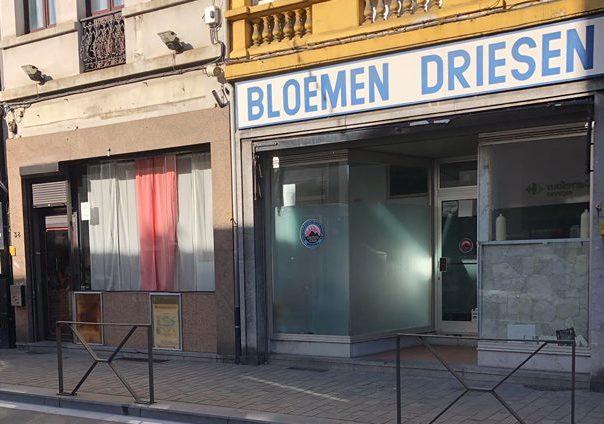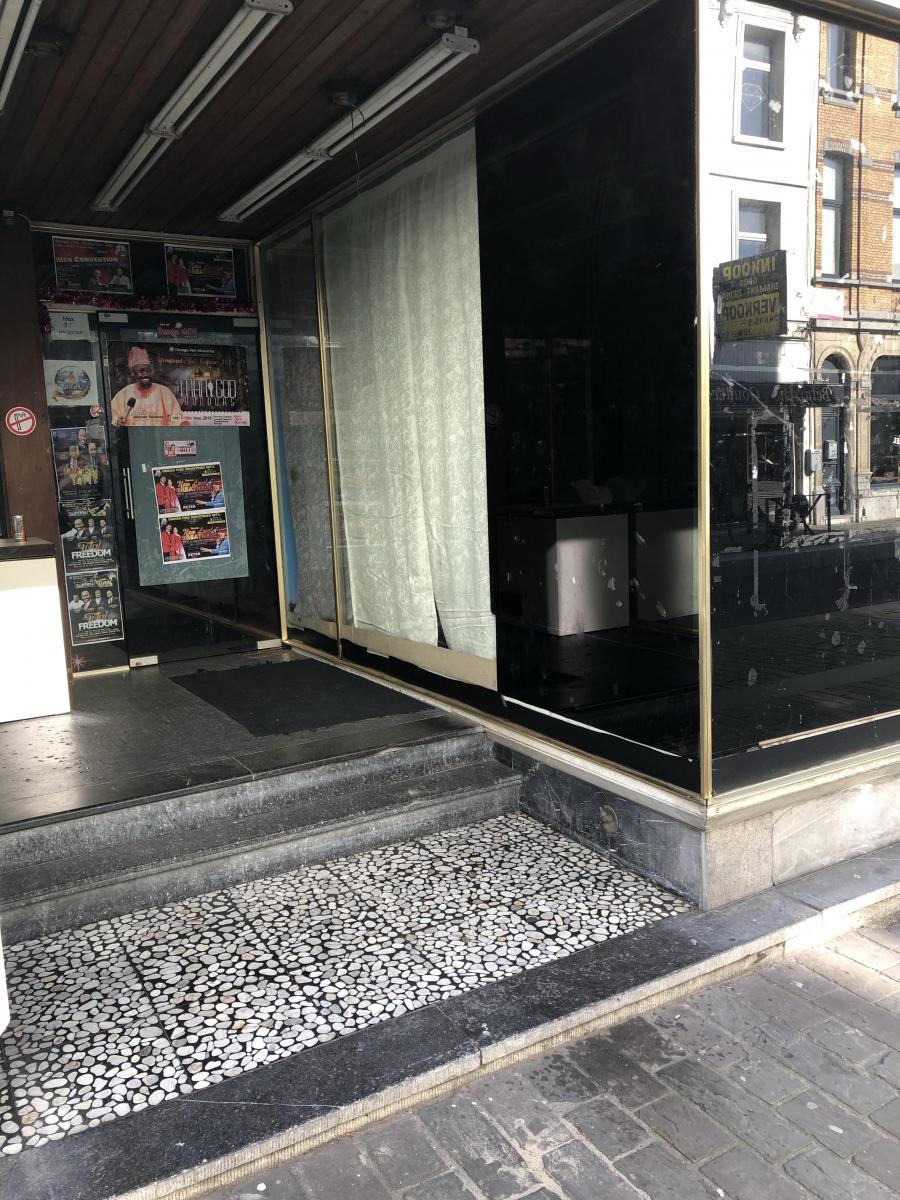
What linguistic landscapes hide
Linguistic landscapes are usually studied as offline objects. But they often lead us online. And what we discover there can considerably affect our image of the offline reality.
Invisible lines in linguistic landscapes
Linguistic landscape studies have become widely popular in recent years, usually as a user-friendly research tool for gaining a quick indicative idea of the kinds of sociolinguistic diversity present in a certain area. Sociolinguists, consequently, are keen snapshot takers whose smartphone lenses capture any and all publicly displays of language wherever they venture. Certainly in times of superdiversity, such snapshots reveal sometimes extreme sociolinguistic diversity in inner cities profoundly marked by globalization processes.
Together with Ico Maly, I've recently embarked on a new round of fieldwork in Oud-Berchem and Ghent, sites we also investigated previously. But this time we follow the invisible lines taking signs in offline material space to online environments. It's not hard to do, for lots of public signs - think of shop signs or posters - contain website addresses or "follow us on Facebook" icons. And what we do when we notice such messages is to take our smartphones out and start Googling. With sometimes quite amazing results.
A religious superstar in Berchem
I provided a comprehensive analysis of Oud-Berchem in a 2013 book called Ethnography, Superdiversity and Linguistic Landscapes, and one of the remarkable features I described there was the density of new evangelical churches in the neighborhood. An 1100-meter long shopping street hosted no less than 16 places of worship, catering mostly for diaspora congregations from various parts of Africa, Asia and Latin America and functioning as places for spiritual as well as material and other forms of crucial support for newcomers.
Decoration inside would be austere and functional, but usually no effort is done to renovate the outside of the church.
The evangelical places are 'storefront churches' located in abandoned (and thus cheap) commercial premises in the shopping street and usually holding a safety license for 49 people, which gives us an idea of the average size of the congregations.

Decoration inside would be austere and functional, but usually no effort is done to renovate the outside of the church. Thus, a Latin American church which moved into a former Chinese restaurant operated for months with the restaurant's menu still on display outside.
Recently, a new church moved into what is perhaps the most run-down building in the entire street. It is operated by a congregation called Omega Fire Ministries, owned and led by Nigerian-born Apostle Johnson Suleman. The church, like most others, has a license for 49 attendees. We can see the front of the building hosting the church in Figure 1.

Omega Fire church, Berchem
Seen from a traditional - offline - linguistic landscape studies perspective, we have told most of what there is to be told. Apostle Johnson Suleman runs his small religious enterprise in an unremarkable former shop in inner-city Berchem, attracting about 40 to 50 (mostly) Nigerian faithful every Sunday for a long service spiced with upbeat Nigerian religious music. The entire operation looks hardly prestigious or grand - shabby, small and poorly resourced rather.
Services performed around the globe are recorded and stored online, enabling local constituencies to be connected to congregations of faithful elsewhere, and to enjoy the Apostle's preachings on a 24/7 basis.
When we follow the online links on the many posters displayed on the outside of the church, an entirely different picture emerges. The Apostle runs a very professional website, announcing (and reporting on) events in countries such as Switzerland, Nigeria and Canada (Figure 2).
Figure 2: Supernatural in Switzerland
The church and its international events are also run as a business, and money transactions are professionally managed by financial partnerships with PayPal and Visacard (Figure 3).
Figure 3: financial partners
So we see how Omega Fire Ministries is fully integrated into an online infrastructure facilitating globalized activities. The Berchem church is a mere node in this transnational network, and Apostle Johnson Suleman is a global, itinerant religious entrepreneur of considerable stature. Services he performs around the globe are livestreamed, recorded and stored online, enabling local constituencies - such as those in Berchem - to be connected to congregations of faithful elsewhere, and to enjoy the Apostle's preachings on a 24/7 basis.
Linguistic landscapes and digital culture
This online dimension of the Apostle's activities is centered on his website - we have seen that - and on a YouTube channel called Celebration TV. The latter puts Apostle Johnson Suleman squarely into the realm of digital culture, and in this field he is no small actor. Figure 4 shows the front of his YouTube channel.
Figure 4: Celebration TV
As we can see, Celebration TV has no less than 106,961 subscribers, and the top clip - a fragment of a service in Nigeria, during which the Apostle brings a young boy back to life - has been viewed over 70,000 times. The Apostle is a very big fellow in the field of globalized evangelical religion. Or to be precise: he is a very big fellow in new evangelical religion as part of globalized digital culture. He uses all of what the online world has to offer in the way of resources and facilities, with very considerable success.
Hidden offline, overt online
When we compare the shabby premises in which Apostle Johnson Suleman offers his spiritual guidance to a maximum of 49 faithful in Berchem with the 106,000 followers of his YouTube channel and the professional splendor of his website, it is clear that the centre of the Apostle's activities is online, not offline. The weight of his global standing and reputation is carried not by the local flocks of followers he attracts in venues such as those in Berchem; it is carried by the effective massification of local practices through an online infrastructure, visible for all and attracting audiences thousands of times larger than the local ones.
And so we're stuck with some theoretical questions here. The offline linguistic landscape is conventionally used as a pointer towards things that are done locally, by a local group of practitioners. This dimension, however, hides a much larger array of people and practices, all of which influence, format and render meaningful what goes on locally. So what, in fact, is "local" in an online-offline world? And who, in actual fact, are the actors in locally observable events, knowing that a simple webcam can greatly, and instantly, expand the number of those who are physically present to very large crowds scattered over a number of locations?
The message Ico Maly and I have picked up is this. Offline linguistic landscapes hide a lot that only becomes overt when one traces these landscapes to their online extensions. It is by this move that we begin to get a grasp of the real complexity of "local" phenomena in a superdiverse world.